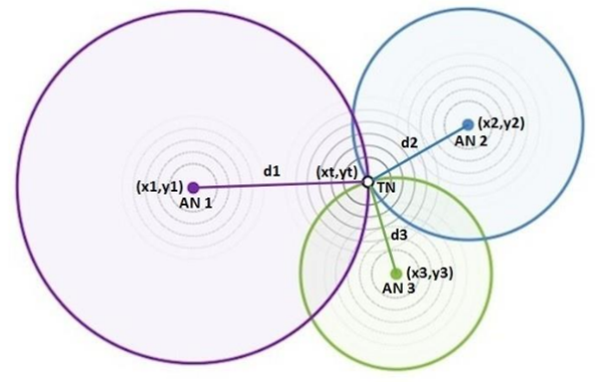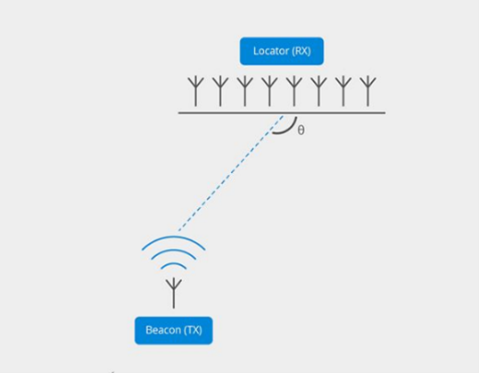Phase-based ranging will give BLE advantages in terms of cost and infrastructure simplicity over other wireless technologies with similar accuracy.
What’s on the horizon for Bluetooth Low Energy (BLE) location determination? Its something called phase-based ranging. Although ratification isn’t expected until 2024, look for early examples from forward leaning vendors including AiRISTA. To help explain it lets looks at the history of ranging technologies available with BLE.

Proximity
Proximity ranging solutions use the attenuation of the BLE signal to estimate distance. Like sound waves, BLE radio energy loses signal strength over distances. When 3 or more receivers with known locations compare the signal strength of a transmitter (received signal strength values, or RSSI), the intersection of the circles around each receiver (representing proximity) marks the x,y location. This method of “trilateration” can be deployed quickly and cost effectively to provide room level accuracy. Through a technique called fingerprinting, accuracy can be improved to bed-level (in the case of healthcare solutions).
Angle of Arrival
 With ratification of BLE 5.1 in 2019, location is calculated based on angle of arrival (AoA). This requires a series of micro antennas precisely distanced from each other to form an array on a board (typically 10-30cm square). As BLE signals wash across the antenna array, the slight differences in the angle of the arriving signal are compared to calculate the location. Think of outdoor orienteering shrunk to millimeter scale. The result is centimeter-level accuracy plus the ability to track in the vertical dimension. The sophistication of the ceiling mounted antenna arrays increases the infrastructure and deployment costs limiting most applications to specific areas (e.g. warehouse receiving areas). Our friend Mikko at Silicon Labs shows a demonstration here.
With ratification of BLE 5.1 in 2019, location is calculated based on angle of arrival (AoA). This requires a series of micro antennas precisely distanced from each other to form an array on a board (typically 10-30cm square). As BLE signals wash across the antenna array, the slight differences in the angle of the arriving signal are compared to calculate the location. Think of outdoor orienteering shrunk to millimeter scale. The result is centimeter-level accuracy plus the ability to track in the vertical dimension. The sophistication of the ceiling mounted antenna arrays increases the infrastructure and deployment costs limiting most applications to specific areas (e.g. warehouse receiving areas). Our friend Mikko at Silicon Labs shows a demonstration here.
Phase-based Ranging
Phase based ranging uses very simple infrastructure to achieve accuracy of 10’s of centimeters. As a signal travels from transmitter to receiver, the signal’s phase shifts proportionate to the distance. The magnitude of the phase shift is used to calculate the distance. To remove the effect of multipath (reflected signals that act like echoes), frequency hopping is used to compare phase shift at multiple frequencies. Our friends at Lambda:4 provide a demo here.

Frequency hopping has been used by other wireless technologies like UWB which use Time-of-Flight to calculate distances. Frequency hopping is simpler for technologies like UWB which operate in wide band. The latest BLE developments have solved for frequency hopping in the more restrictive space of BLE. This results in accuracy performance similar to that of UWB using only tags and reflectors (the reflector is basically a tag at a fixed location). This dramatically reduces the required infrastructure and leverages the benefits of BLE; cost, battery life, distance.
AiRISTA’s Flow’s heavy investment in R&D includes porotypes of various wireless location technologies like LoRa and UWB. But the results we have found with BLE together with the battery life, price points, and market proliferation have guided our decision to invest aggressively in BLE. With broad market acceptance and technology improvements, BLE is positioned to overtake many of the use cases addressed by other wireless technologies.
If you want to learn more about the products and services of AiRISTA, please contact sales@airistaflow.com.





